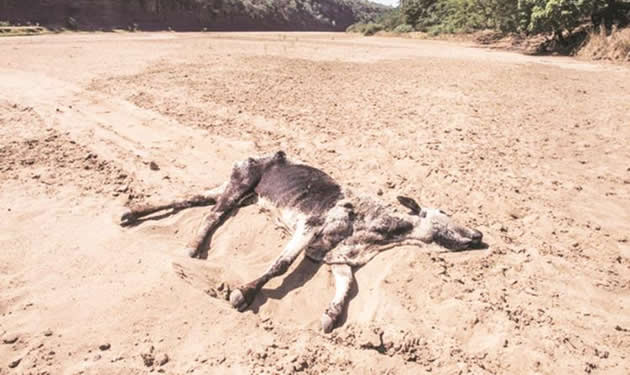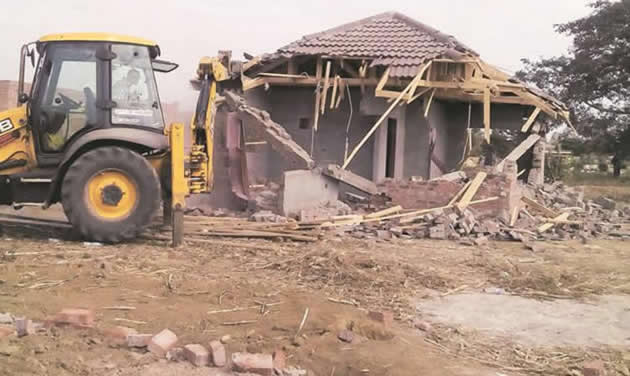16 000 cattle succumb to drought

 Elita Chikwati Agriculture Reporter
Elita Chikwati Agriculture Reporter
More than 15 800 cattle have succumbed to drought as the Food and Agriculture Organisation (FAO) has intervened with $1 million worth of stockfeeds for supplementary feeding.
The Division of Livestock and Production Development (LPD) in the Ministry of Agriculture, Mechanisation and Irrigation Development said the most affected areas are Masvingo, Matabeleland North, Manicaland, Midlands and Matabeleland South.
LPD director, Mr Bothwell Makodza yesterday said by last Friday, the country had recorded 15 842 cattle deaths.
“Masvingo province has the highest number of deaths with 6 566 cattle succumbing to drought. Matabeleland North recorded 3 606 deaths, Manicaland 3 111, Midlands 1 301 and Matabeleland South 1 268.
“To date, FAO has assisted livestock farmers in the affected areas with $1 million worth of subsidised supplementary feeds,” he said.
Mr Makodza urged farmers to sell some of the unproductive livestock to get cash to buy feeds to save the remaining herd.
“Farmers can also source grazing from under-stocked A2 farms and areas adjacent to national parks provided they adhere to veterinary conditions.
“There is no use for farmers to wait until their livestock die instead of selling them while in good condition and salvage some value out of it. We also encourage farmers not to burn grass, but to cut and bale as it comes in handy when situations like these arise,” he said.
Meanwhile, farmers in the drought-stricken areas are selling livestock at give away prices to get cash to buy food.
Zimbabwe Farmers’ Union director, Mr Paul Zakariya said it was impossible for the farmers to get viable prices for their cattle because most people in the affected areas were selling.
“Farmers selling livestock are more than those willing to buy. It is the issue of supply and demand. Everyone wants to sell many cattle and this will push prices down.
“Farmers do not always sell their livestock but in this case they do not have an option as they want to survive. It is an issue of ensuring safety nets at a family level. Even if they do not sell, the livestock will succumb to drought,” he said.
Mr Zakariya said it was disappointing that abattoirs were offering low prices for cattle but the price of beef was not going down.
“Abattoirs are buying directly from farmers at cheap prices but beef is still being sold at high prices. The markets should be reflective of the situation on the ground,” he said.
Mr Zakariya said pen fattening programmes were being hampered by unavailability of reliable water sources. He said some rivers, boreholes and weirs had dried up and people were getting water from make shift shallow wells dug on sand on the river banks and silting rivers.
The water table has also gone down, affecting supply of water for livestock. Zimbabwe Commercial Farmers Union President, Mr Wonder Chabikwa said the situation in farming areas was very sad.
“The farmers are so desperate and this is compounded by greedy buyers who are taking advantage of the drought. Farmers have to sell for survival. Unfortunately the worst hit areas are also affected by foot and mouth disease and farmers cannot relocate their livestock to regions 1, 2 and 3 for better grazing,” he said.








Comments